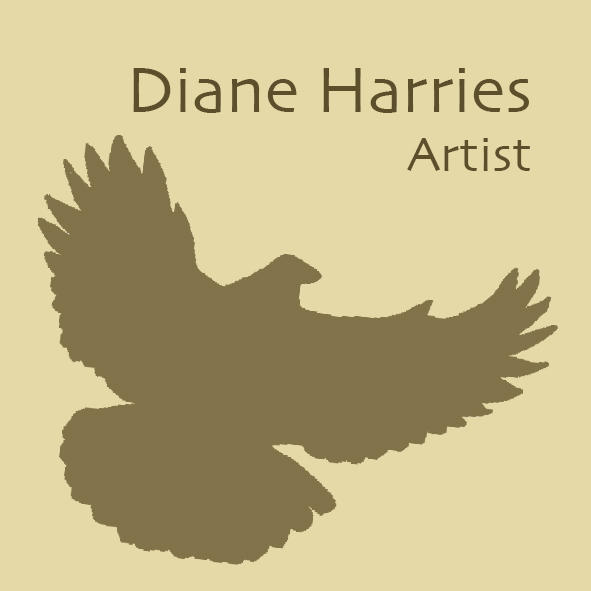Diane Harries, Artist Books page 2 (2018 - 2020)
Two artist books created for the Thinking Unfolding Exhibition of the Print Council of Aotearoa New Zealand. On show in Aratoi, Masterton 2019, and in Ashburton, Blenheim and Hastings City Gallery in 2021.
Creeping Diaspora, 2019
Media/Materials used: Flax paper, driftwood, canes, linen thread
Dimensions: Spine height: 300 mm; Spine depth: 200 mm; Closed width: 650 mm; Open width: 1110 mm
Description: Arched spine mounted on lump of driftwood, with long pages bound to the canes attached to the arch.
Pages are printed with monoprints, stencils and linocuts, depicting invasive vines in New Zealand.
Artist's Statement: My concern is the plethora of invasive vines smothering our New Zealand landscapes and native flora. Mostly imported garden specimens, they have found a very favourable environment where they can thrive as escapees from their cultivated prisons. Some have come by sea – reflected in the driftwood base to the book; some have come by air – represented by the arched spine of the book. Even the pages behave as long unruly outgrowths that wish to spread as far as they can.
Tenacious Tendrils
Companion wall work for Creeping Diaspora
Linocut, monoprint, stencil
Artist Statement: this new work sees the invasive vines of Bastia Hill continuing to infiltrate the public spaces. Our busy lives distract us and we may not notice this relentless progress. Some species grow more in spring, others flourish in autumn. They envelop, undermine and smother each other in turn as the calendar pages roll by.
Dimensions: Portrait orientation 410 mm wide x 750 mm high
The Tale of the Snail, 2019
Media/Materials used: Flax paper, flax leaves (curled and dried), linen thread
Dimensions: Height 160 mm; Width 600 mm x 600 mm.
Description: Stands as if a star book, permanently open. Pages loop back into the piano-hinge style spine with page ends spiralling through the hinge spine into a vortex in the centre.
Artist's Statement: What did it mean to the medieval scribes who drew knights fighting snails in the margins of their illuminated manuscripts? Historians speculate why, but I perceive it as a warning that time creeps up on all of us, as slowly as a snail. We should be vigilant about how we use our precious time and “seize the day” (carpe diem). The apricot-coloured background collagraph occurred by virtue of paper that had been eaten by snails in the garden.
I am also pushing the boundaries of the book towards the snail’s shell, where everything is turning to spirals, from the curled flax-leaf “skewers” to the pages that have no edge or fold, but simply become the next “page”. Inside and outside are a new parameter for a page. A structure that defies “closing”.
Legacy, 2018
Venetian blind artist book
Monoprint, screenprint, collage
The botanical history of Gordon Park Scenic Reserve provides a window on the social changes that have marked the region. European settlers cleared most of the native bush for farmland, but this tiny patch of swamp forest three kilometres east of Whanganui was saved by an enlightened landowner. Today as conservationists, we mourn the loss of native species everywhere.
The plants there today tell these stories of loss and invasion. Drainage of the area for pastureland has put native kahikatea (white pine) trees at risk during drought and some have died. Their bleached skeletons stand sentinel to this historically neglected status. Paradoxically, the exotic bunya pine (Australian native) nearby, is valued as a marker of the original homestead (now removed), and is officially recorded as Protected Tree #96. The stories are enmeshed in our history and changing values, indicated by the woven fabric in the book.
However, regardless of their social meaning, there is splendour in both of these trees, and the music is a whimsical appreciation of beauty in the face of mankind's fickle imprints upon the earth.
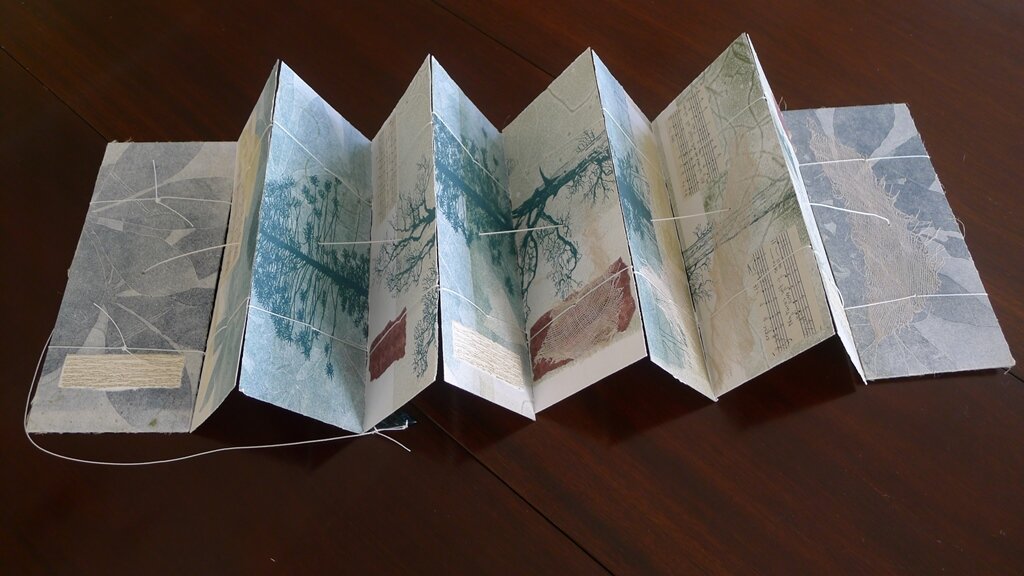
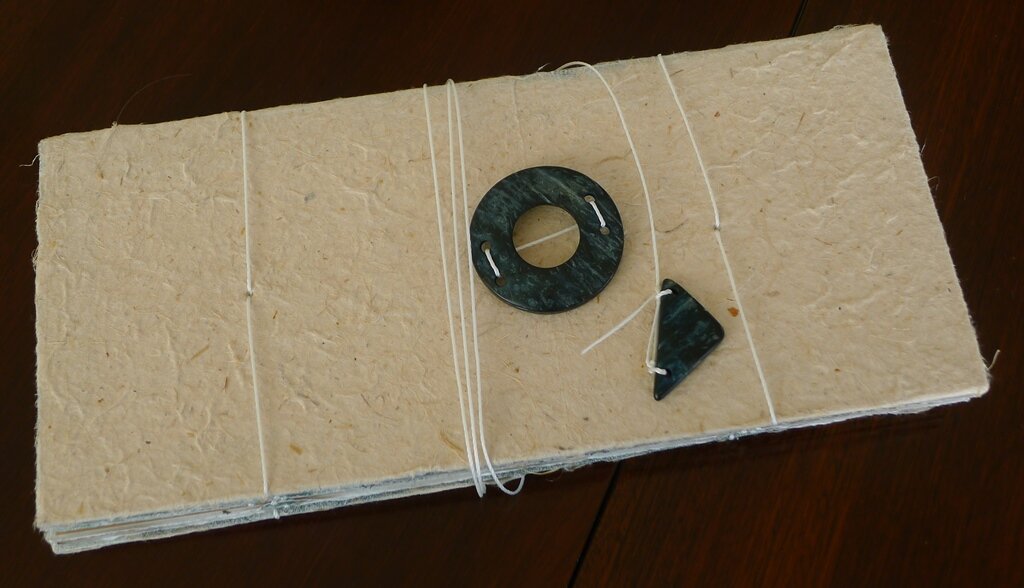
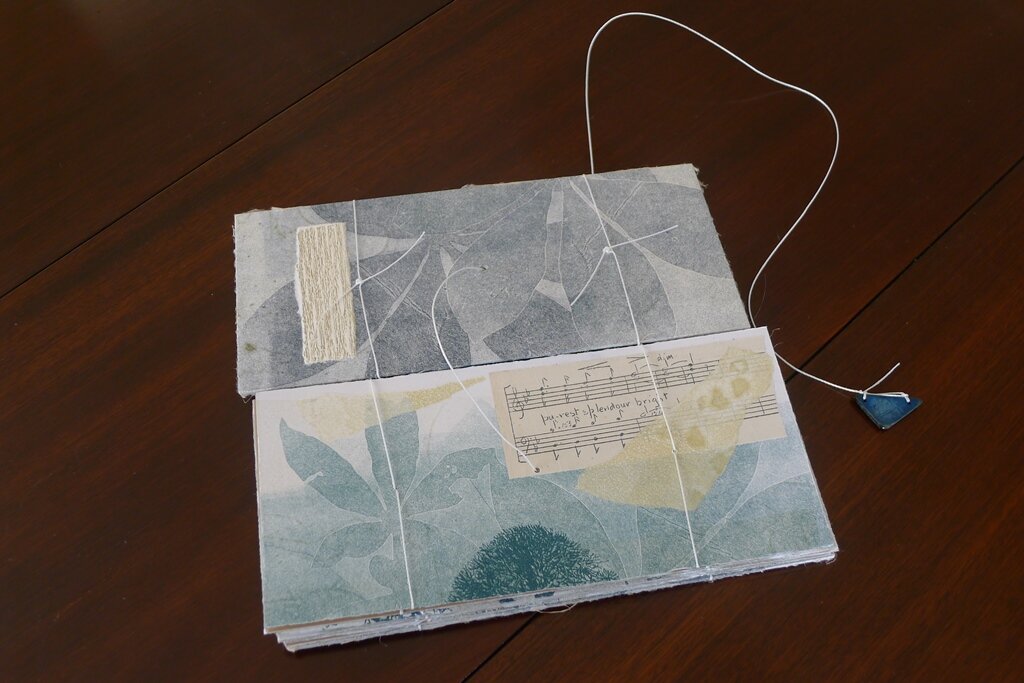
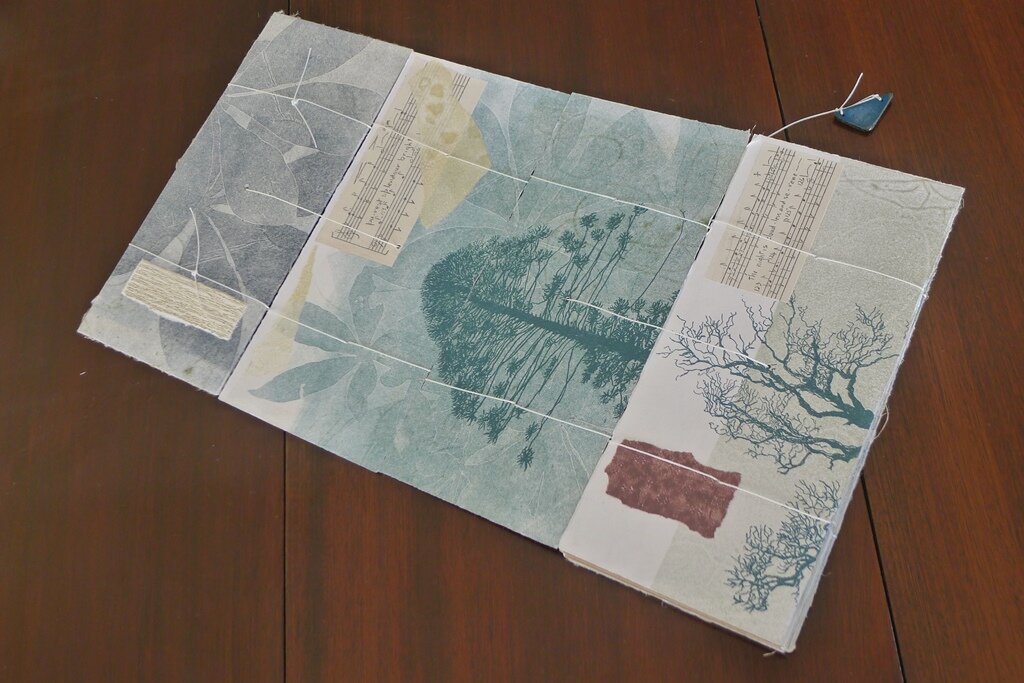
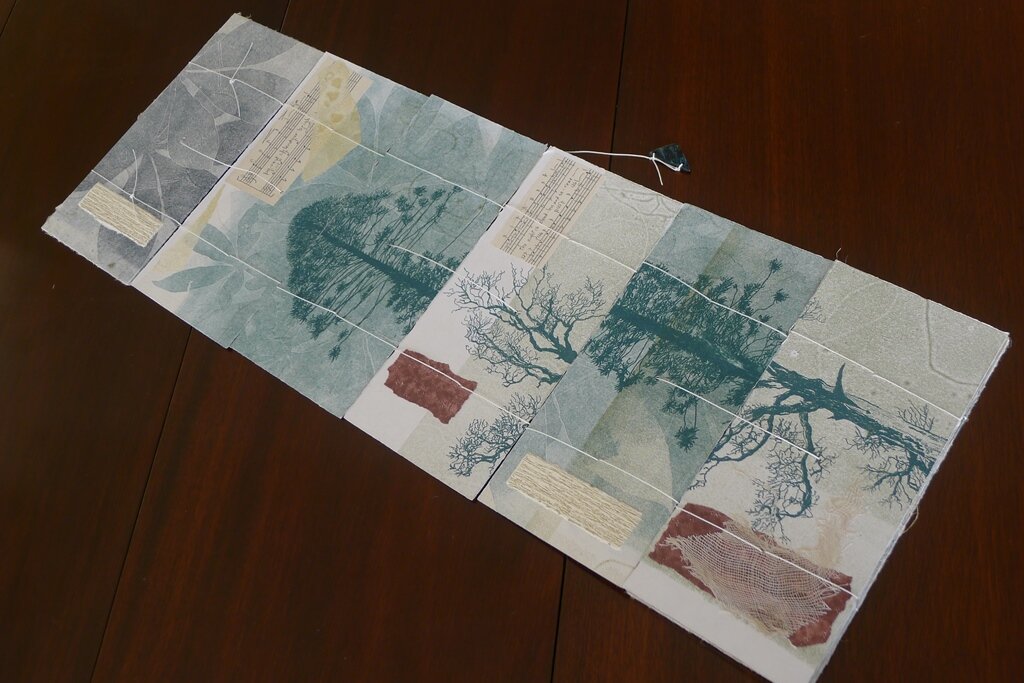
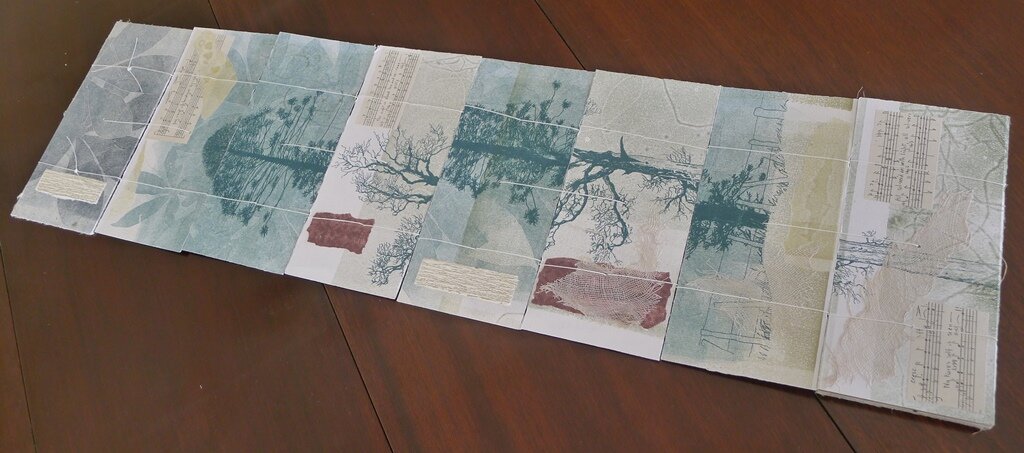
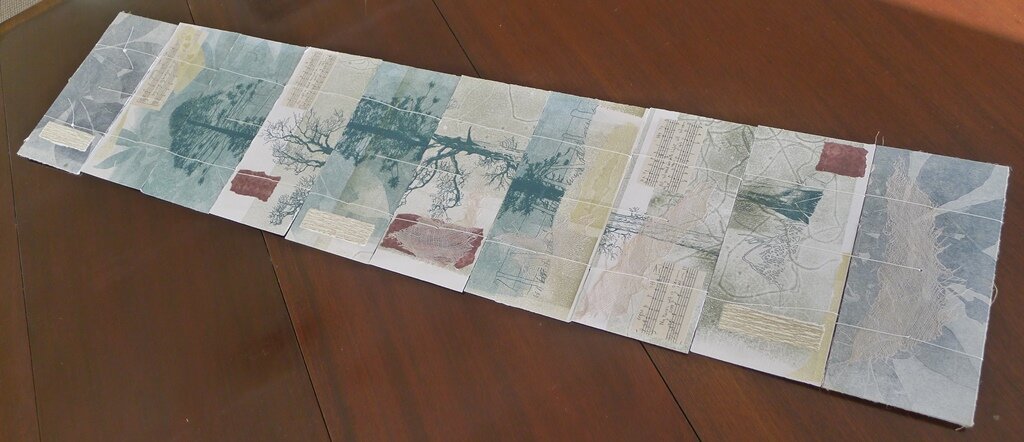

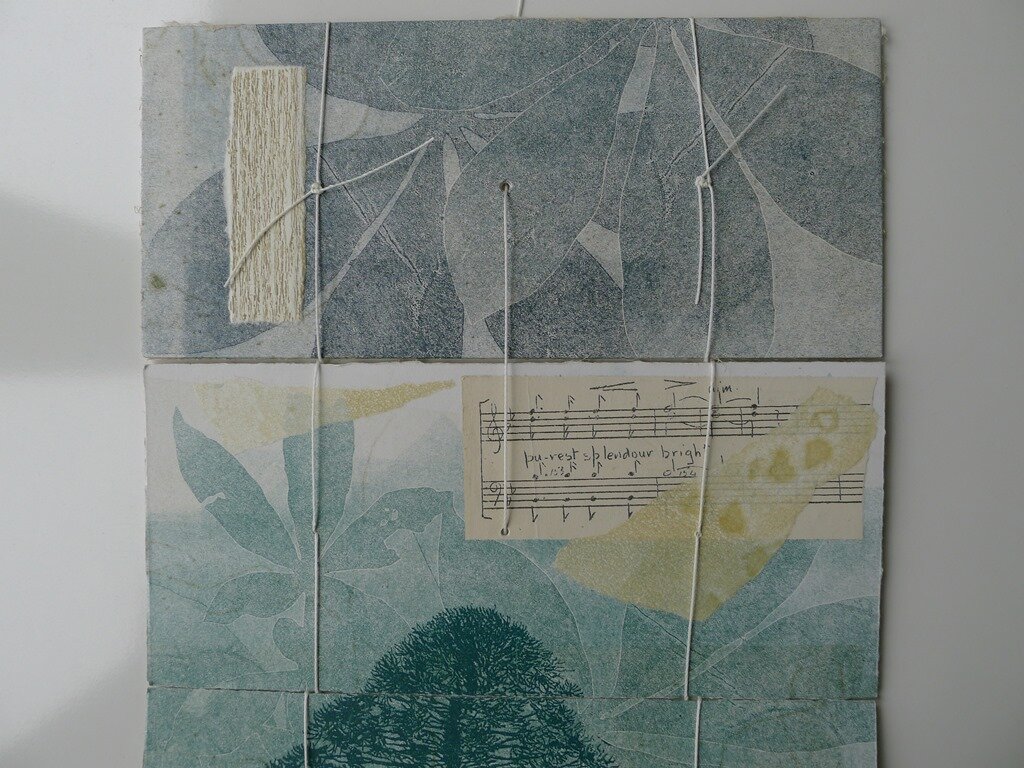

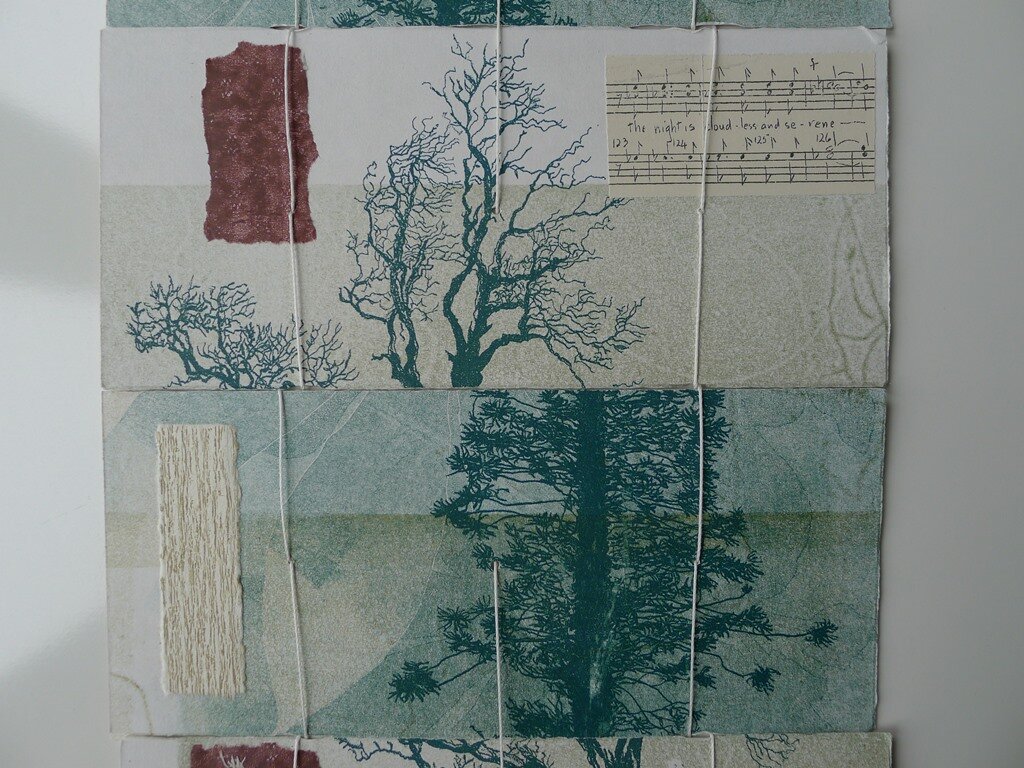
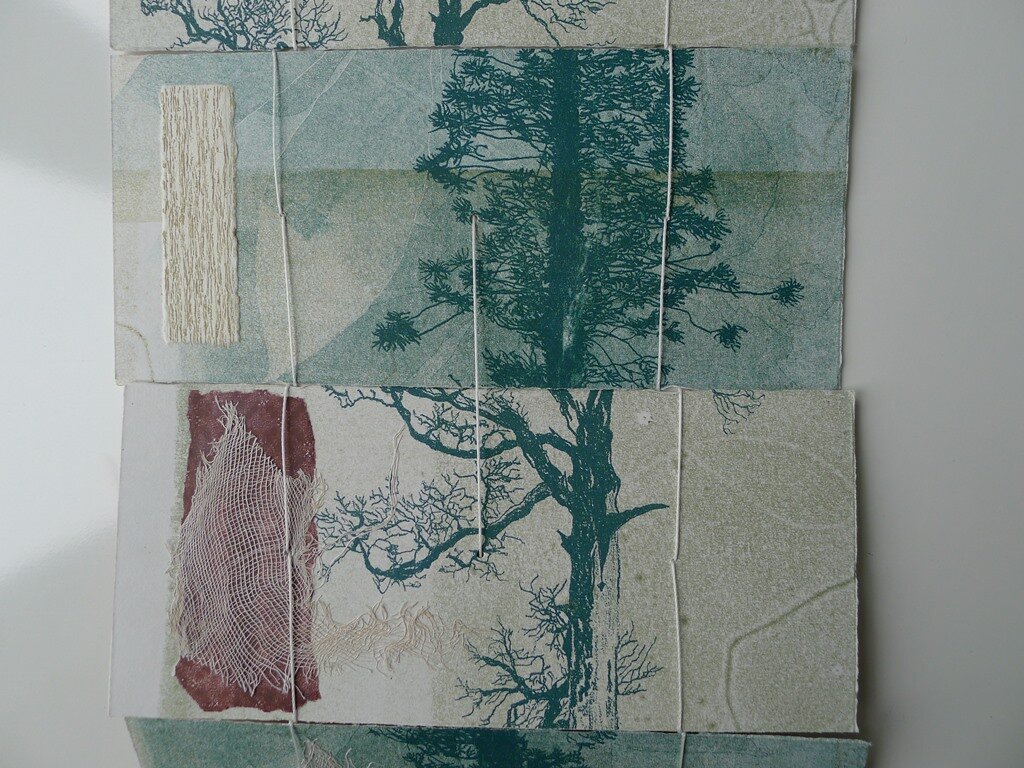
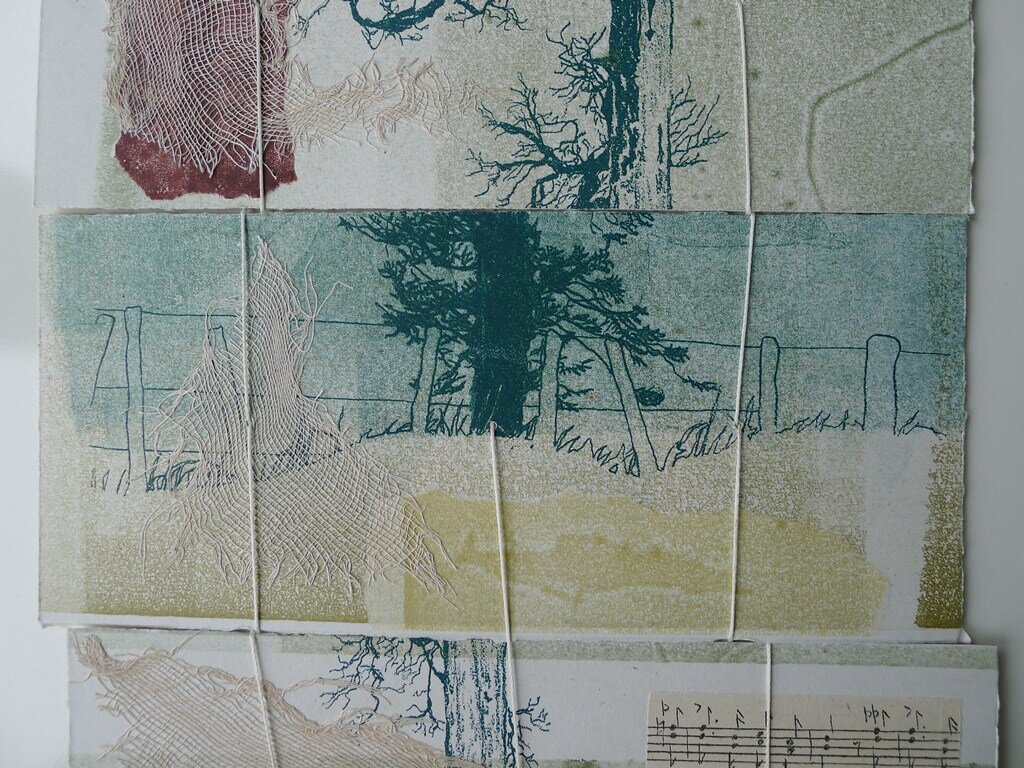
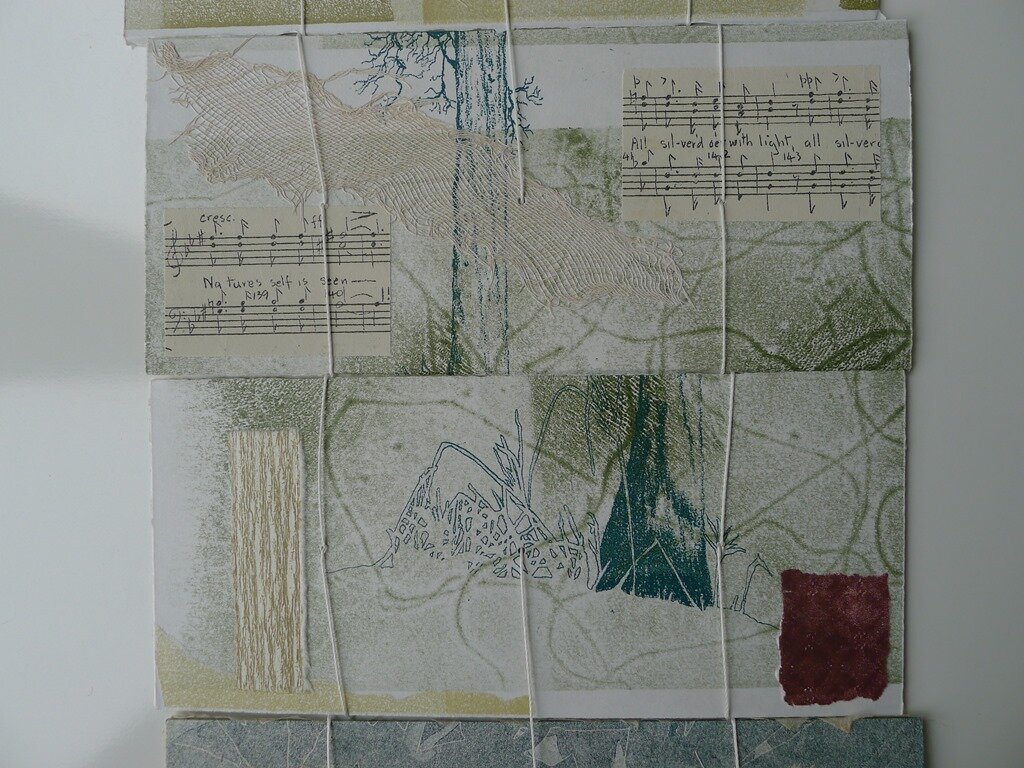
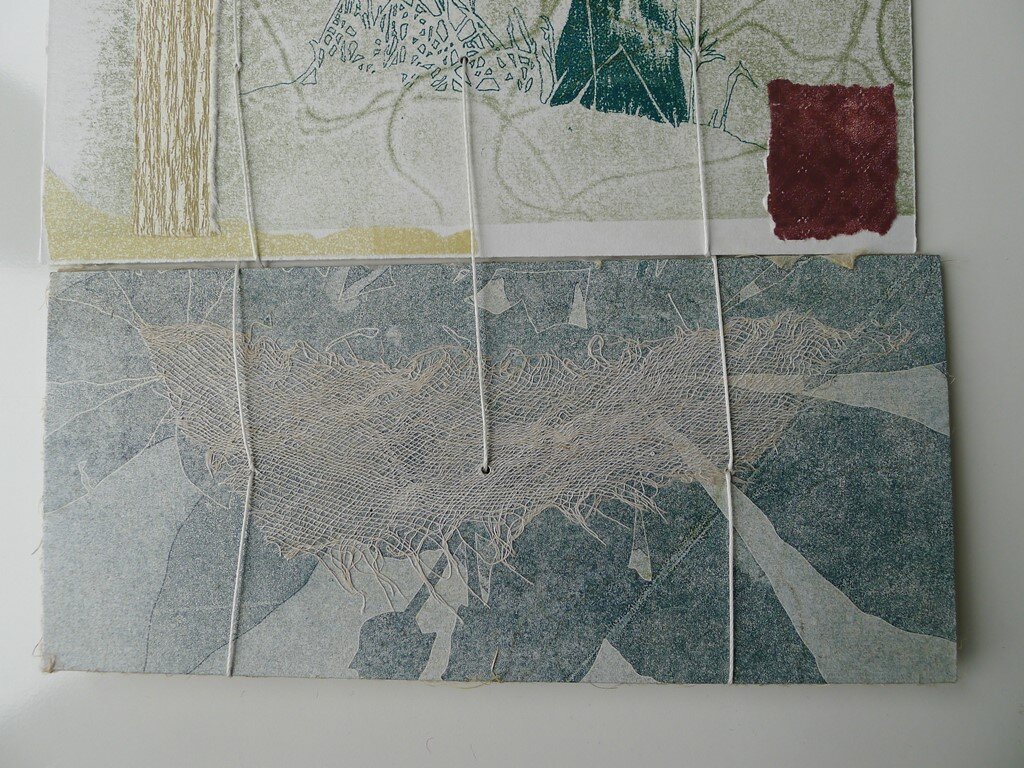
Diane’s Diary, 2020
Artist Statement: When does the idea of daily drawing practice become a social commentary?
When my husband and I purchased a new motorhome, I looked forward to the time to draw every day, while we travelled around New Zealand. I worked in a recently handmade book, and created a visual log book of what we did and saw each day. I included everything I felt like drawing, from tourist sights to the mundane, whatever we participated in while away, and even the games we devised on those stretches of road where I would otherwise fall asleep in the passenger seat. With motorhome living a relatively newly widespread activity, has it yet been documented? The result has become a pertinent and current social commentary of this facet of middle class life in New Zealand – the ordinary becoming extraordinary by being captured in the coloured pencils.
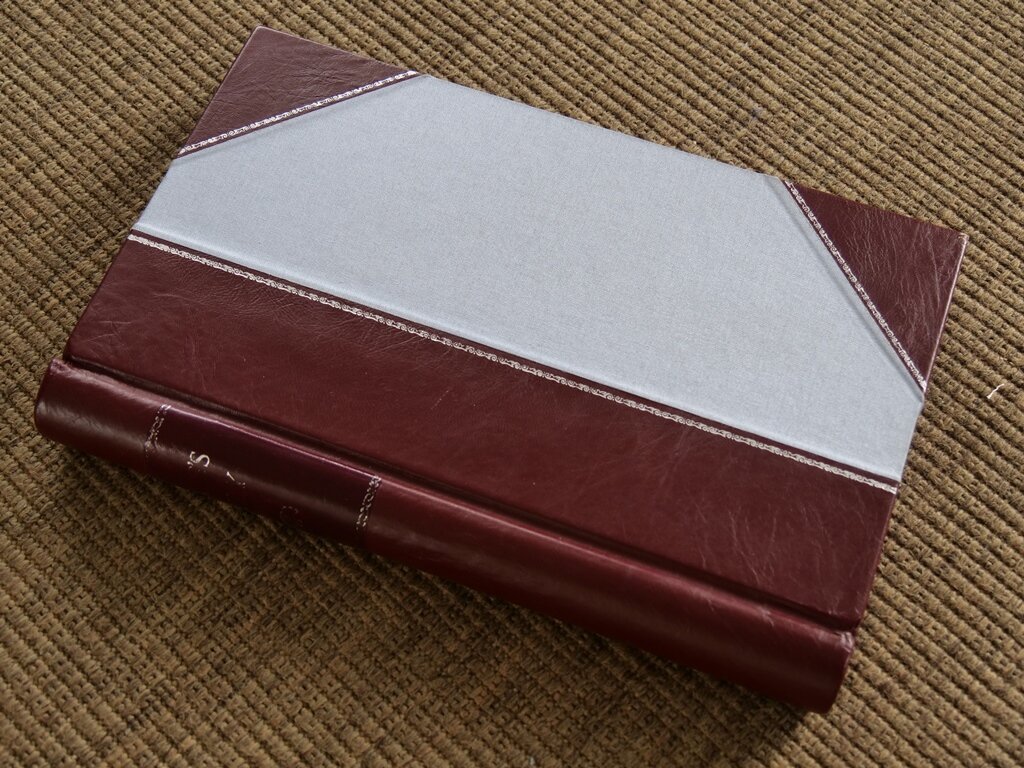

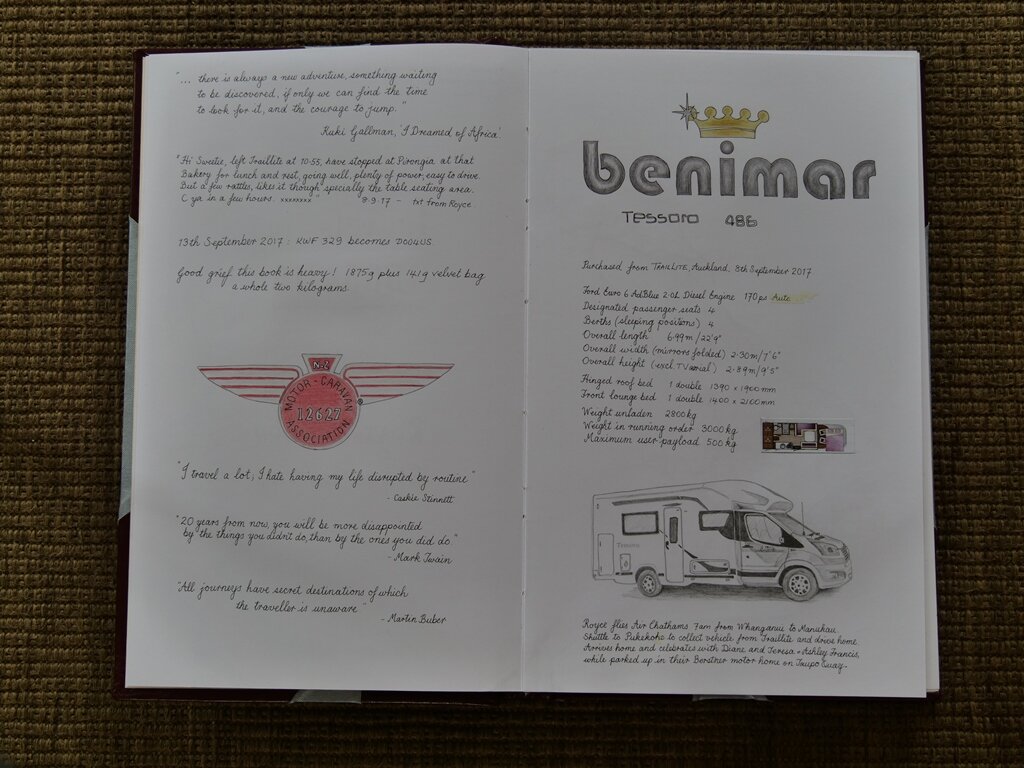
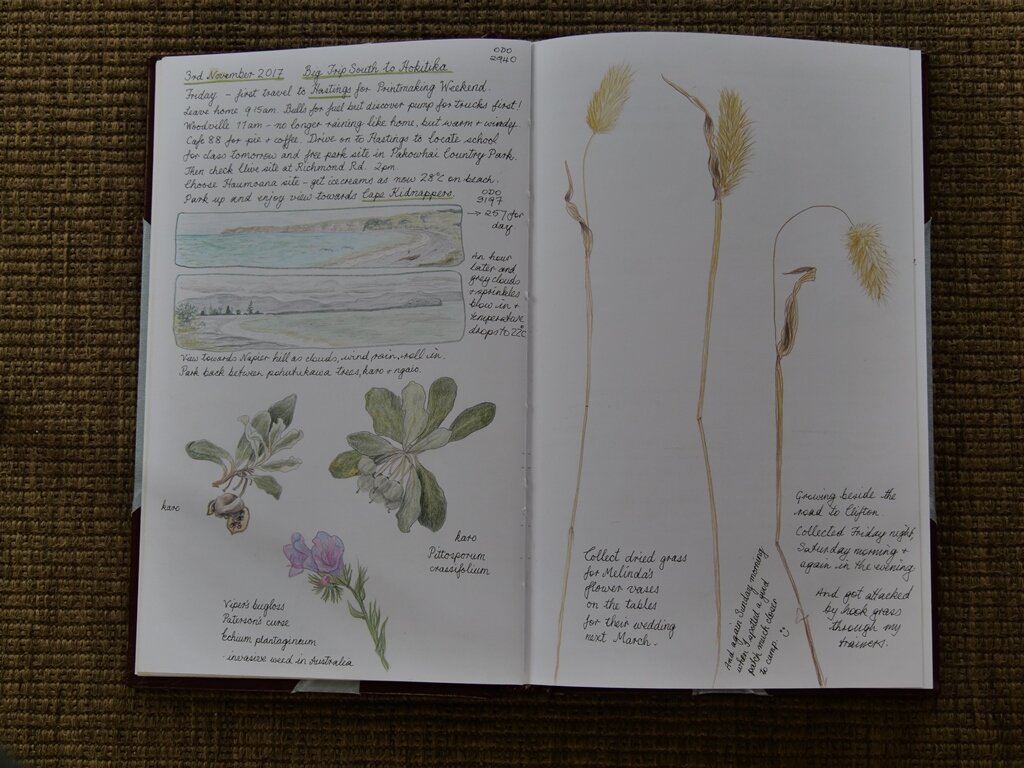
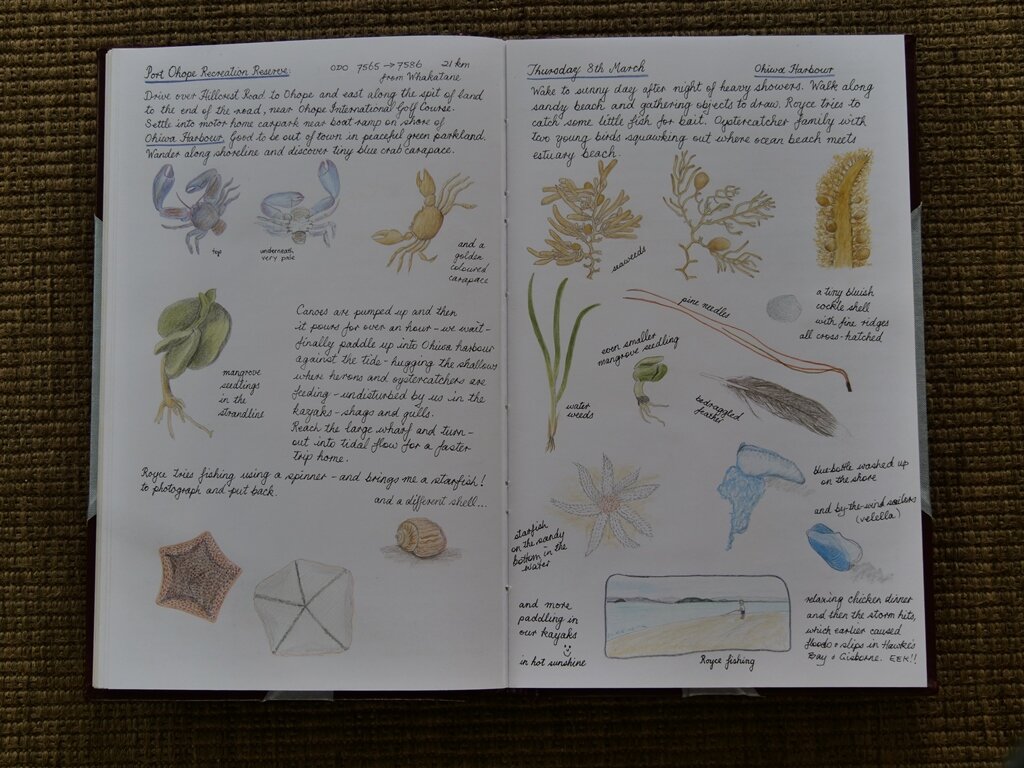
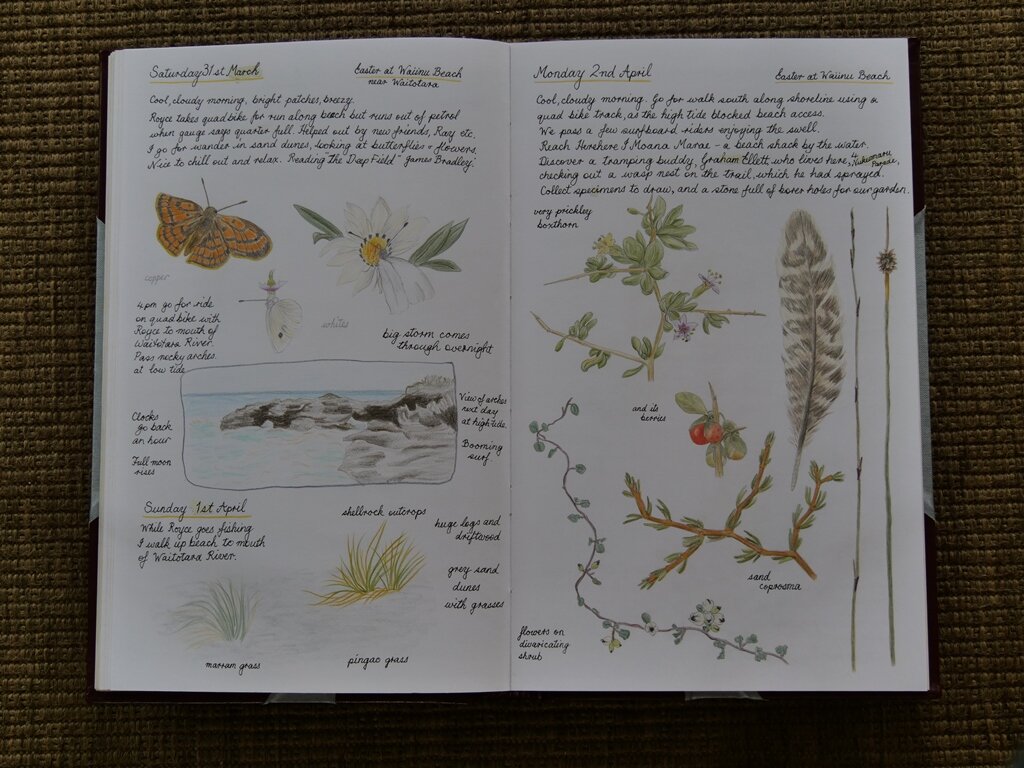
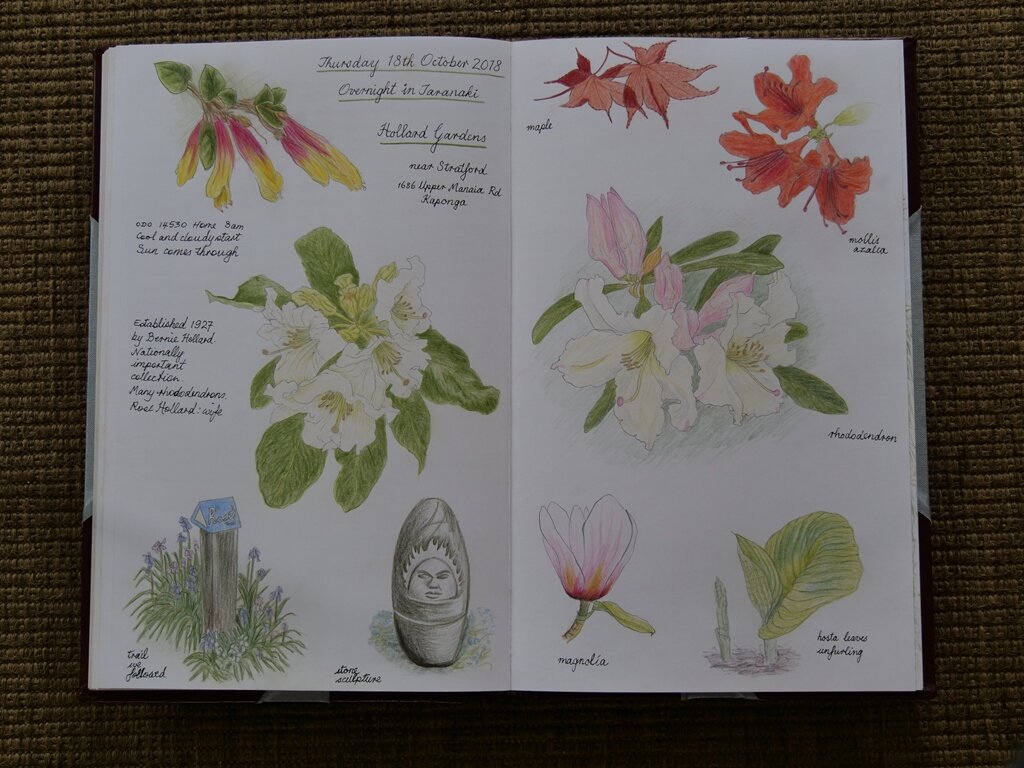
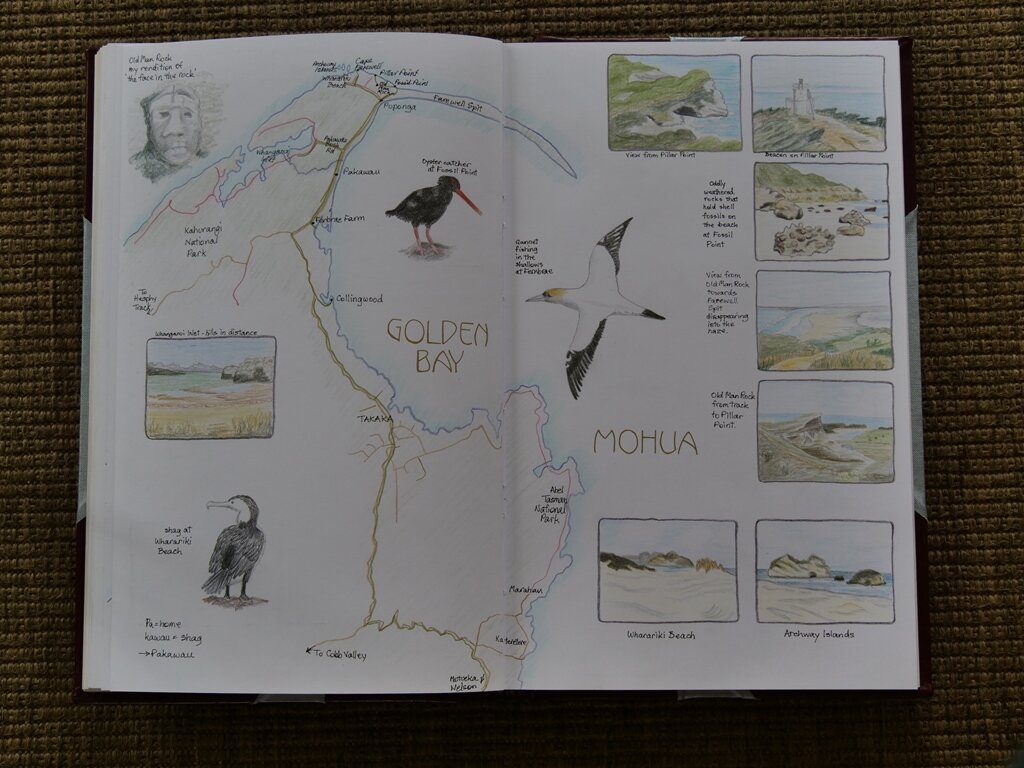
Pocket Books 2018
Figured out how to make a book with no glue and no stitching, that has two pockets on the outside of the cover that could hold a decorative strip that wraps across the spine.
Next, created a book of pocket pages each held on a concertina spine, and then a fillet box to house it in.
Celtic Weave Binding
Beautiful black handmade paper from France, lent itself to images of the Celtic knot patterns that I studied and learned to draw using pen and coloured pencils. By the time I filled the whole book I felt like a Medieval apprentice!
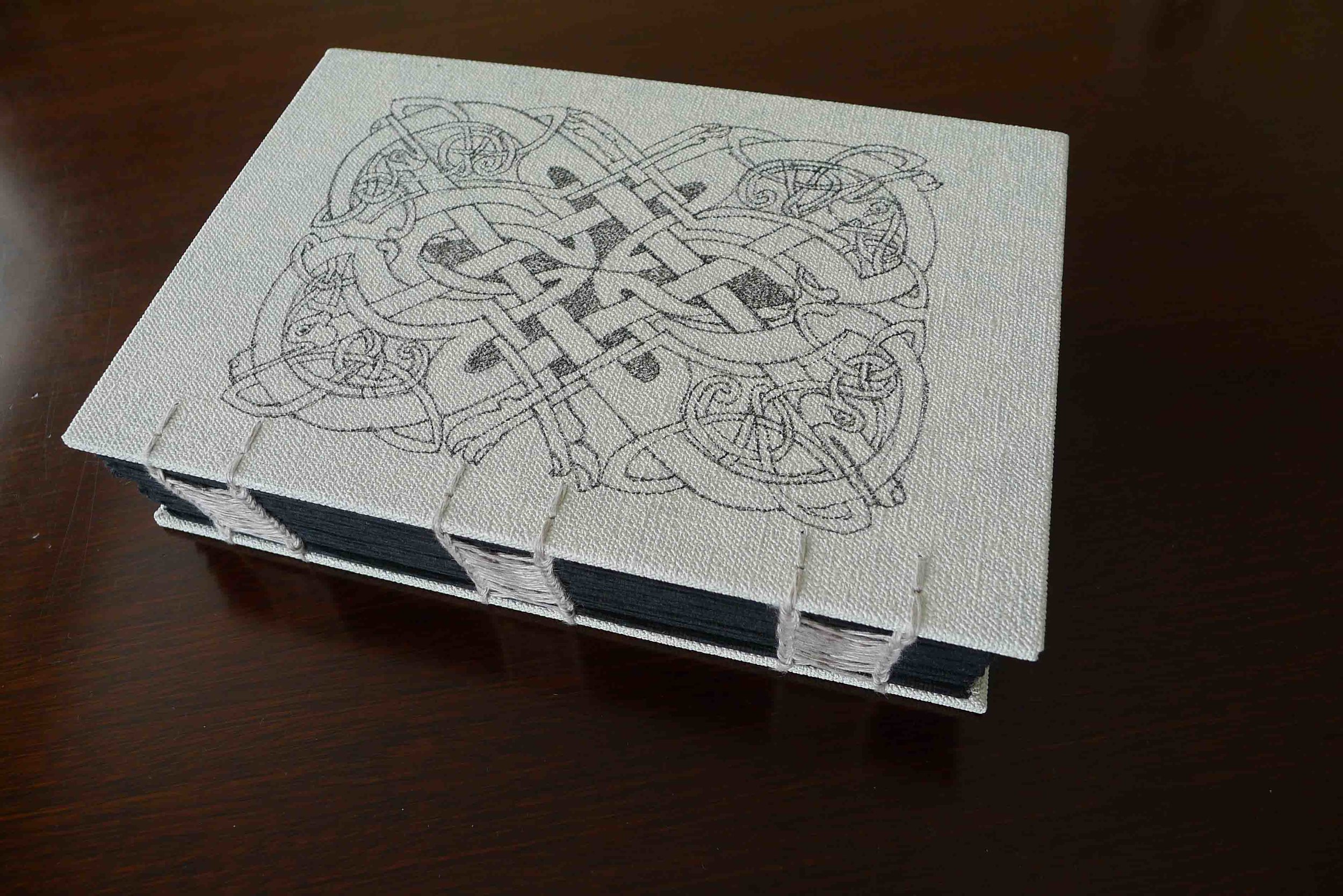
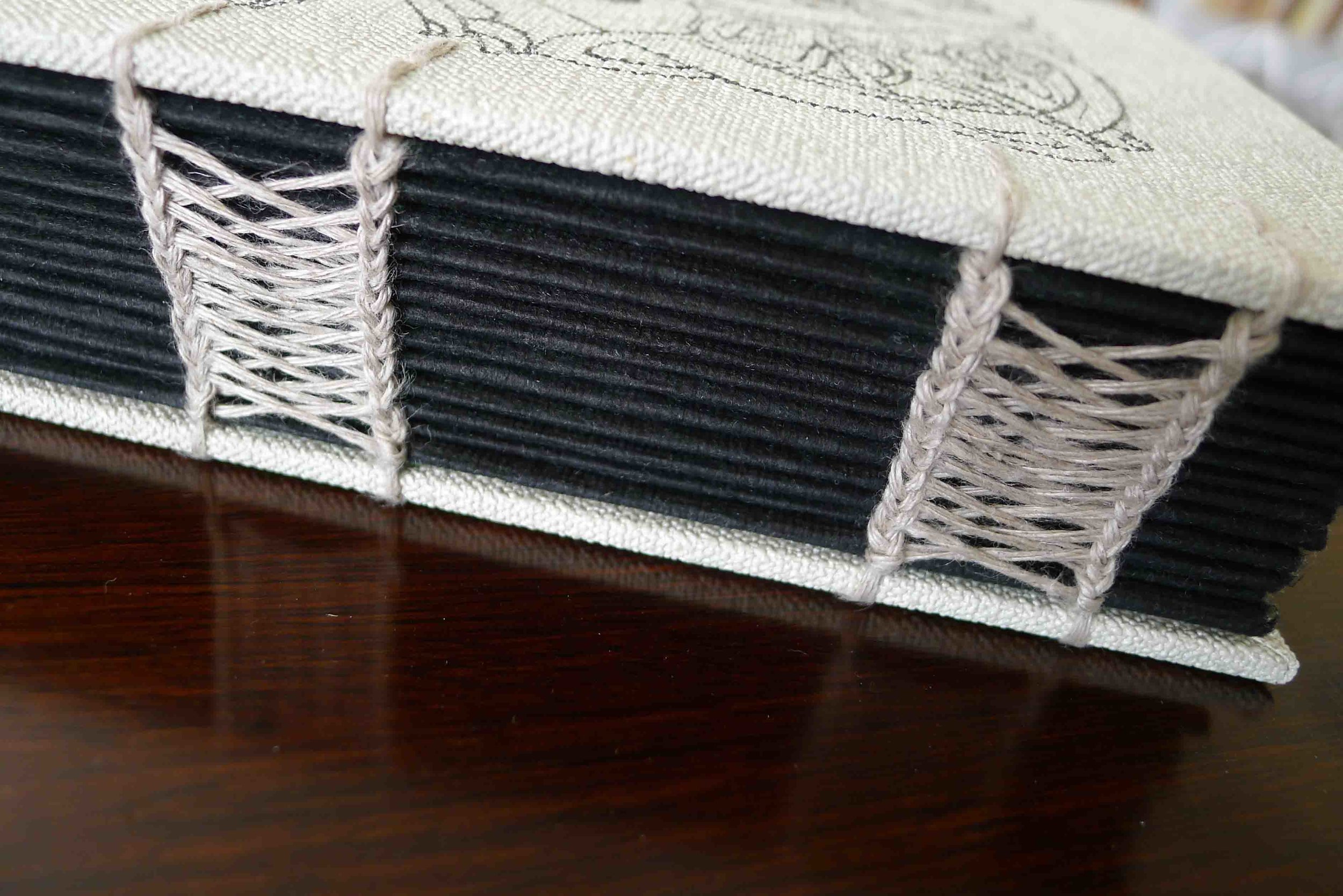
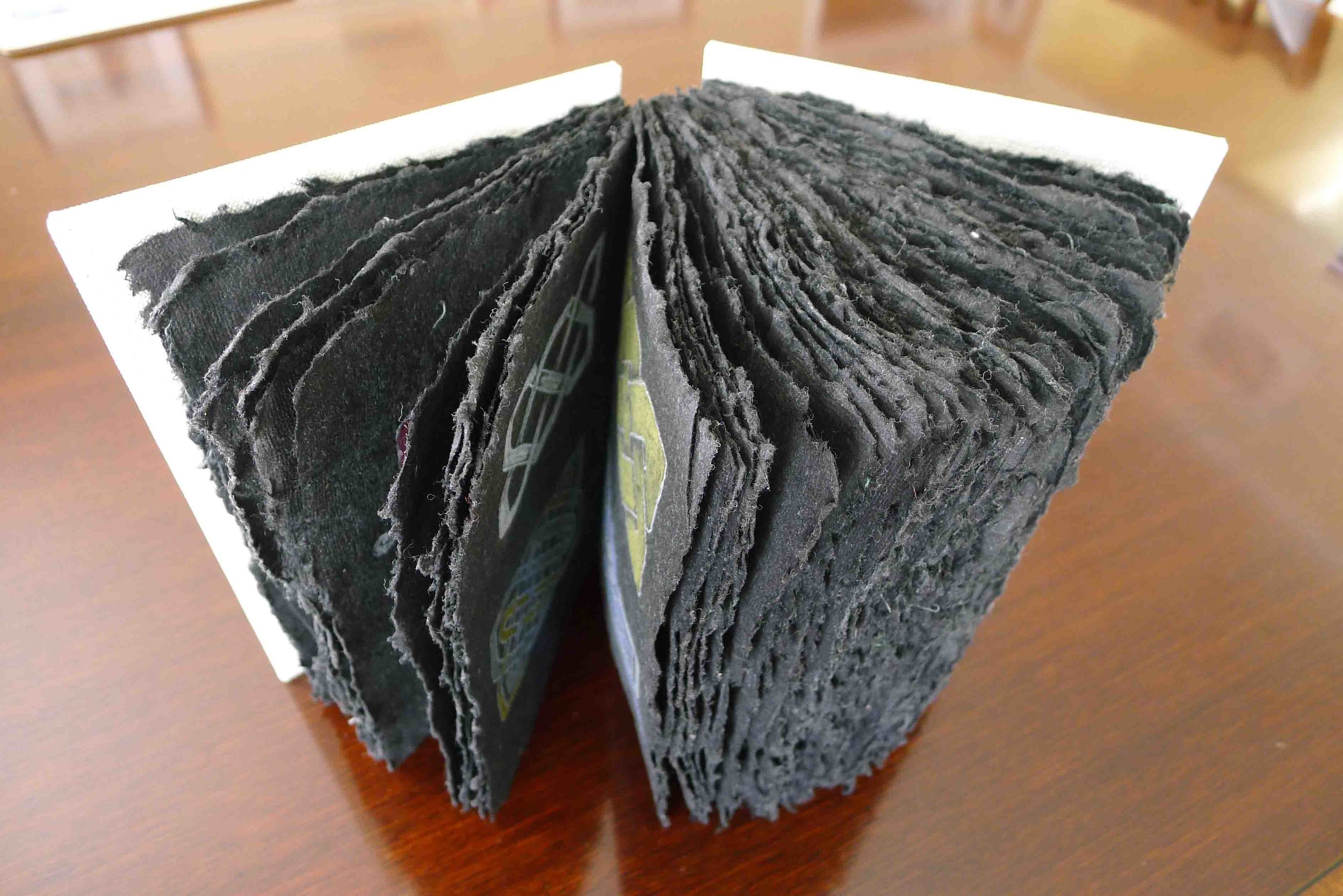
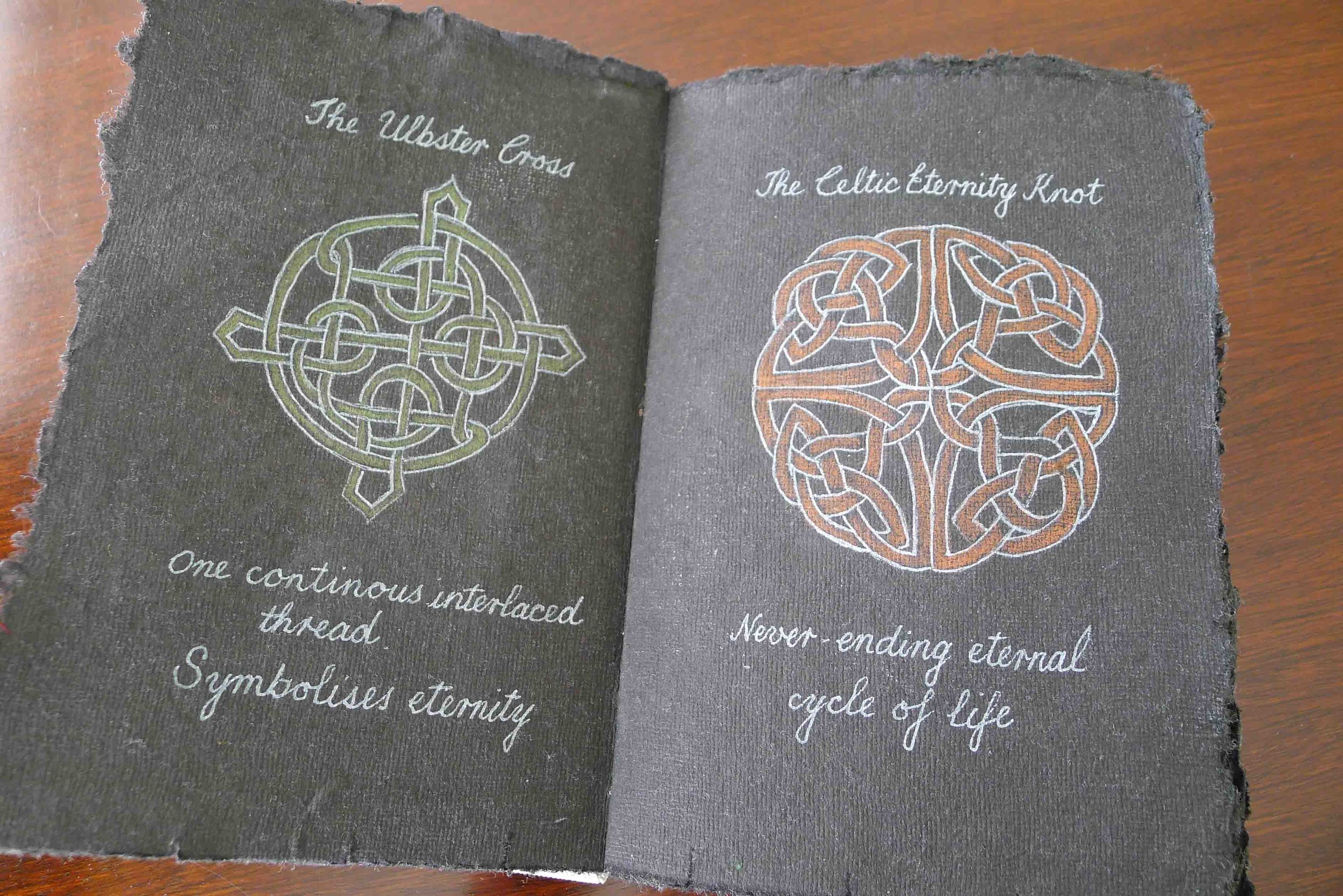
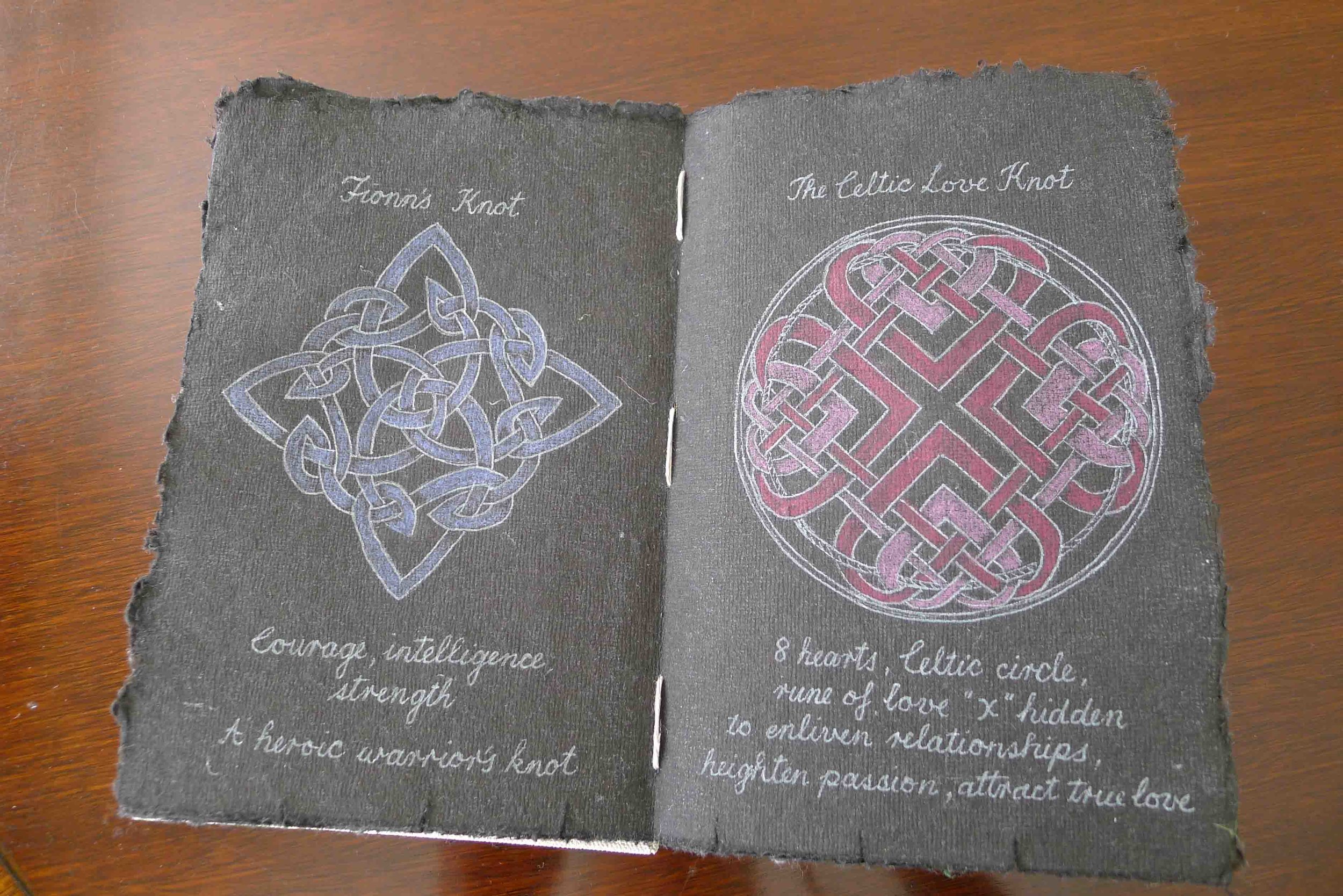
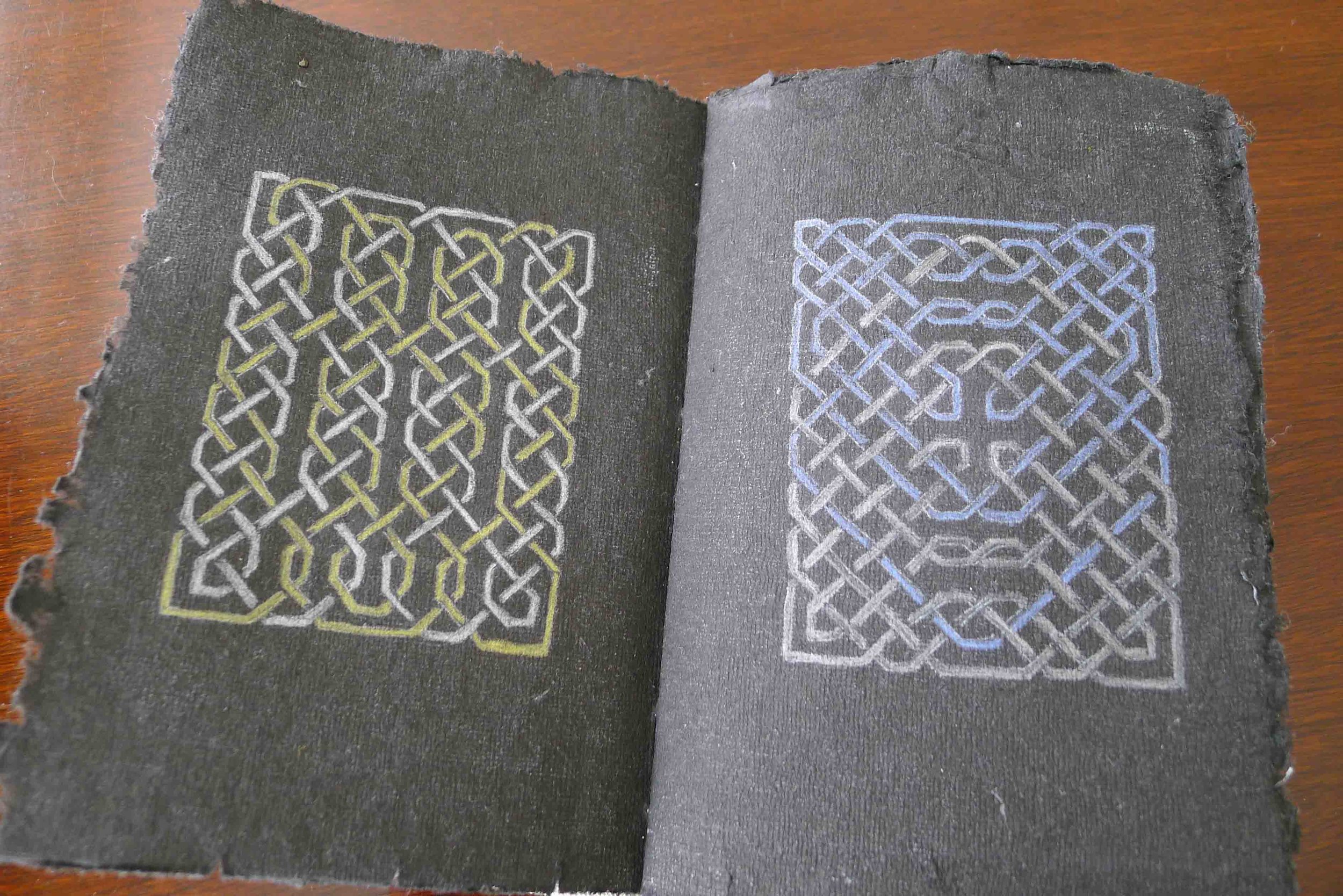
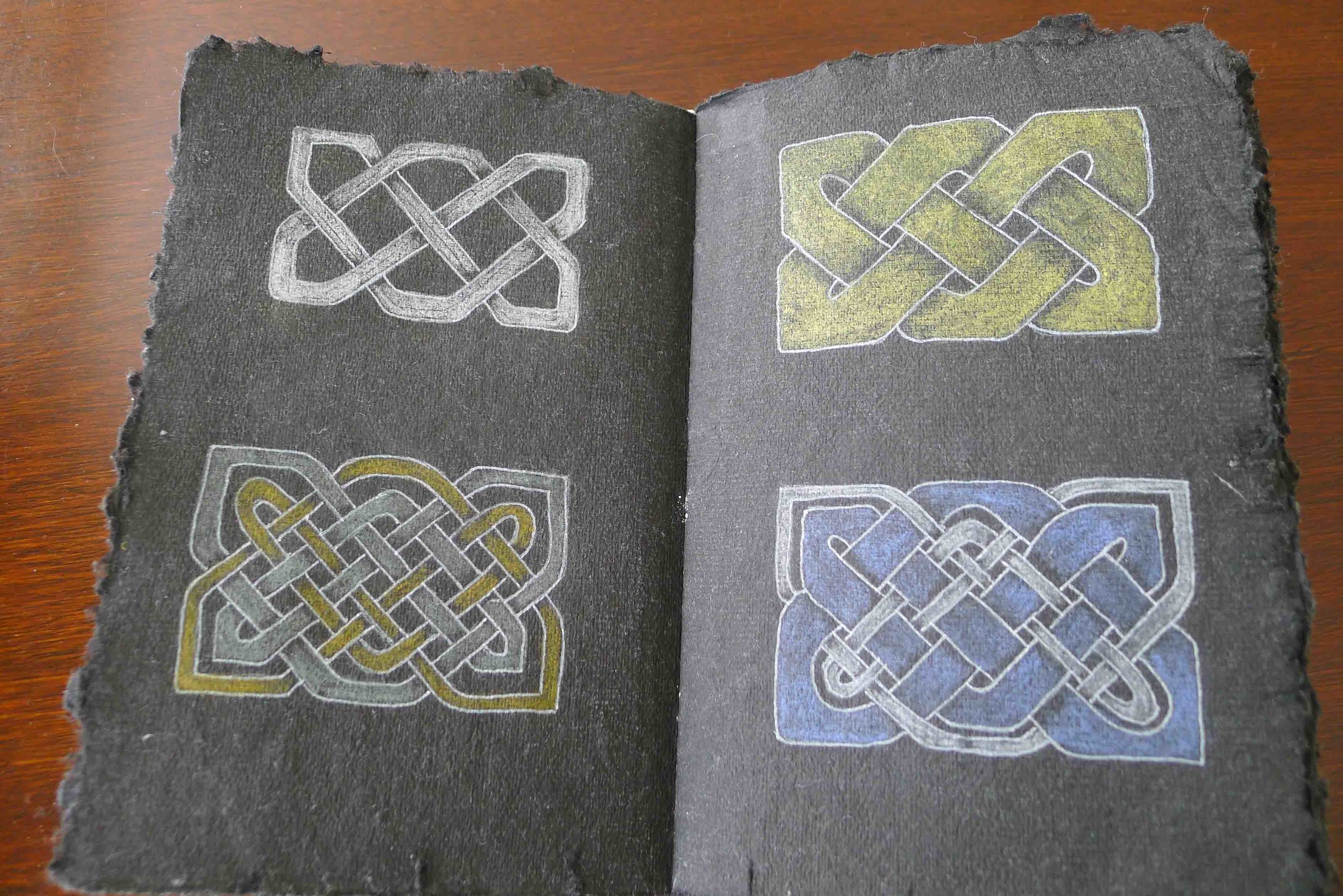

Flexi-spine binding
This binding depends on wires that are embedded in the edges of the pages and then tied together one by one. The pages are rigid and create an effective show for the content. The cover was a fern frond drawn on textured wallpaper. When I found some cyanotype paper, I knew I needed pressed and dried fern fronds to expose on the paper. Now the content talks to the cover!
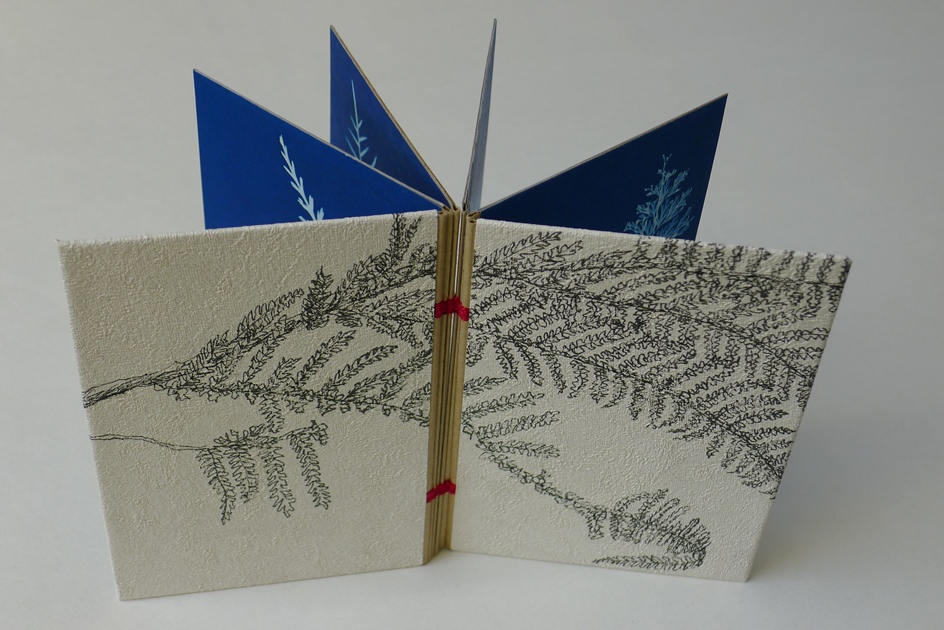
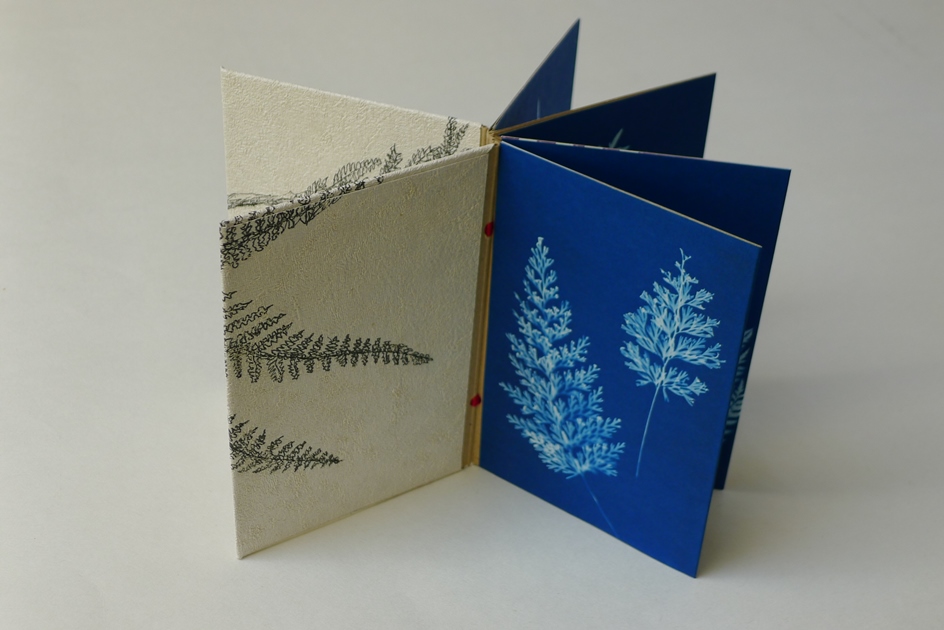
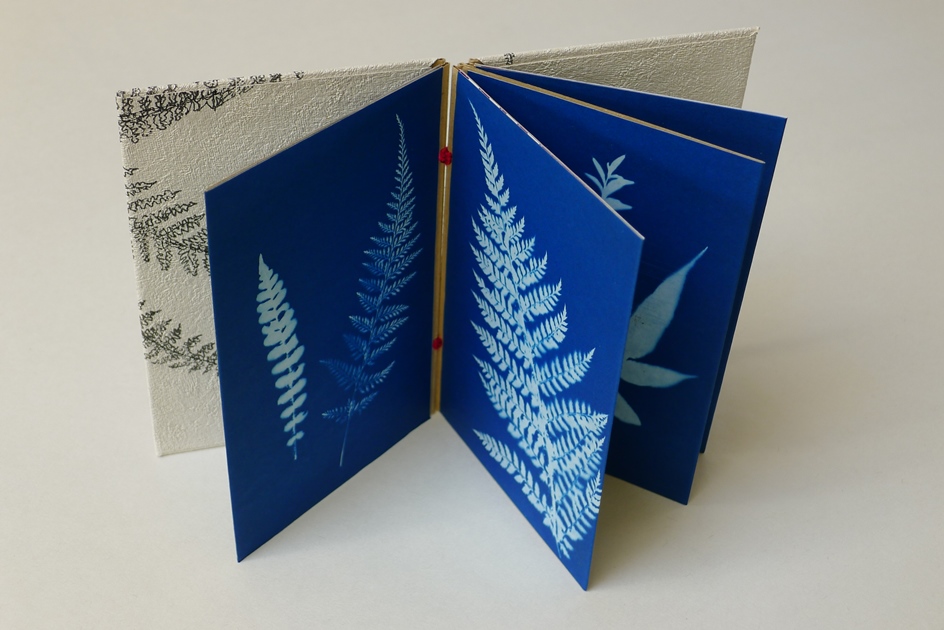
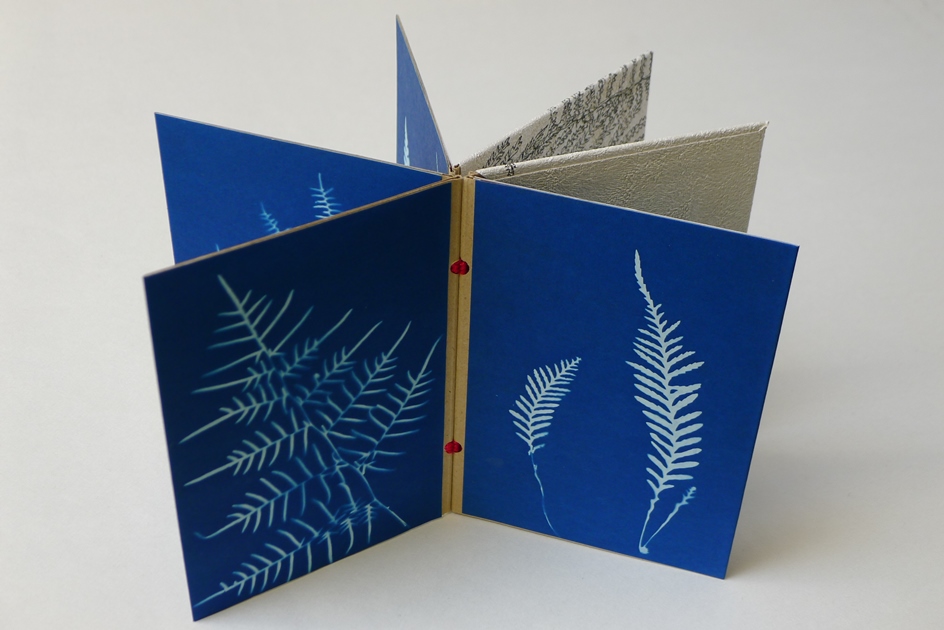
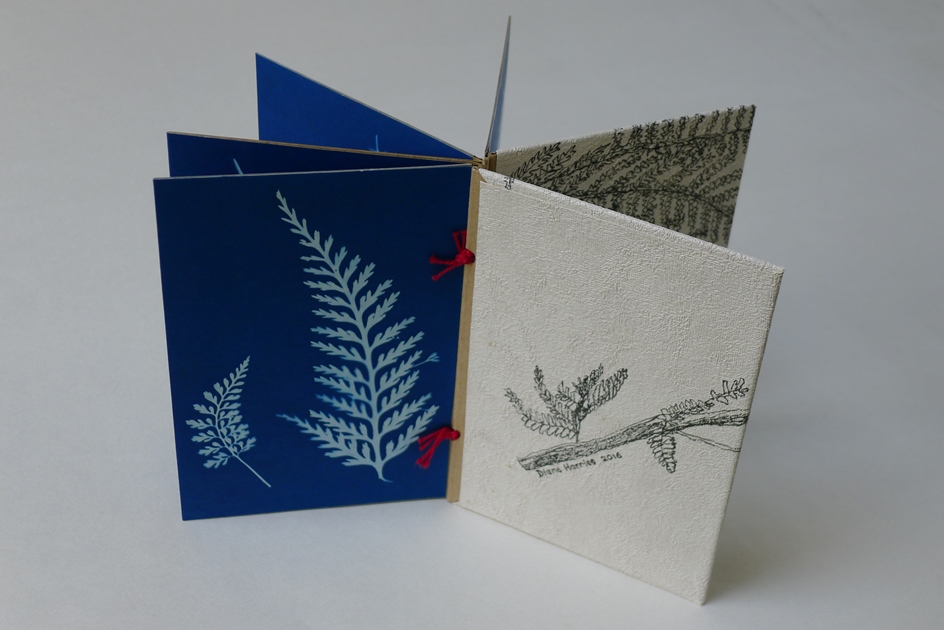
For more flex-spine bindings turn to the page of book structures -
Secret Belgian Bindings
Highway Book
Green acrolin; panels of natural linen cloth; variegated hand dyed linen thread from Ann Bell; recycled pages from engineering maps of the proposed Transmission Gully highway!
Almost a Coptic binding but with a separate spine board that is cunningly held in place by the stitching which secures the covers to the book block.
Secret Belgian Binding
Secret Belgian Binding - wooden covers
Wooden Boat Book
The wooden covers, crafted by Royce Johnson, were polished and waxed to feel like satin, and were inspired by wooden boat building. A set of 11 linocuts of wooden medieval sailing ships were printed on pages of wooden boat building plans to create the 240 pages (60 folios).
Tapered stitching holes and plans
MEDIEVAL SHIP LINOCUTs and collagraphs
and wooden boat plans
